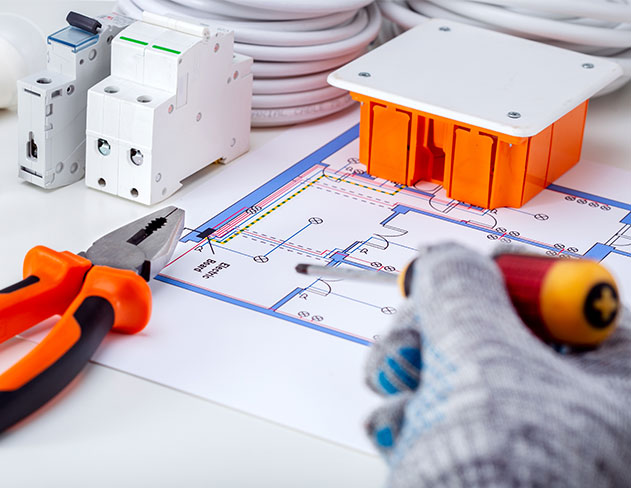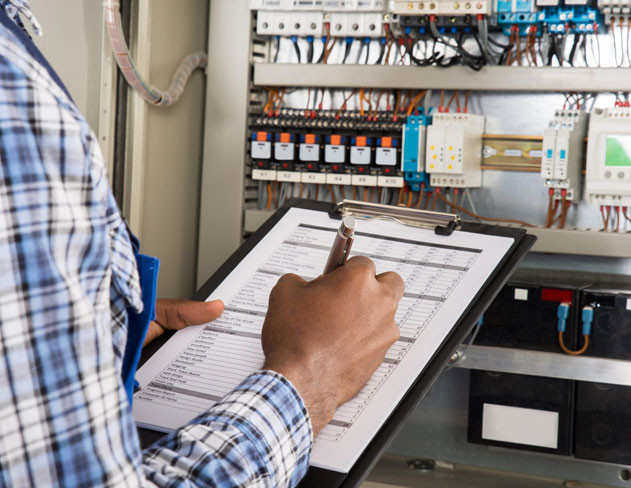Complete Guide to PAT Testing
PAT Testing or Portable Appliance Testing (PAT) is the process of routinely checking the safety of electrical appliances and equipment. It involves visual inspections and electrical tests to identify any defects that could endanger users. Regular PAT testing is crucial for reducing electrical risks in the workplace and homes.
Most people research PAT testing to ensure the safety of electrical devices, meet legal compliance standards, and maximise appliance longevity through preventative maintenance.
This guide will provide readers with a comprehensive understanding of PAT testing, including its importance, procedures, best practices, common myths, and role within a holistic safety strategy. Actionable steps and confidence in PAT testing will result.
What is PAT – Portable Appliance Testing?
It is the process of routinely inspecting and testing portable electrical equipment to ensure it is safe for continued use and does not pose a shock or fire hazard. Appliances and devices that are not permanently wired into an electrical installation, but use a power cable and plug, are considered portable appliances.
PAT testing evolved from the Electricity at Work Regulations 1989, which mandated taking precautions against workplace electrical risks. Over the years, PAT testing became more widespread as a key business compliance requirement and recommended best practice. Advancements in PAT testing equipment and standards improved the process.
With growing reliance on electrical devices, PAT testing is now critical for identifying damaged, defective, or faulty appliances that can cause electric shocks, fires, or explosions. It provides assurance and protects users, while also meeting legal obligations.
Why is PAT Testing Essential?
- Safety Concerns: The Health and Safety Executive estimates around 1,000 electrical accidents occur annually in UK workplaces. Faulty portable appliances are a leading cause. PAT testing keeps employees, customers, and all users safe by detecting defects before accidents occur.
- Legal Compliance: The Electricity at Work Regulations mandate taking precautions against electrical risks. HSE guidance recommends PAT testing as part of this duty. Many insurance policies also require PAT testing evidence. Failing to test appliances could breach regulations and invalidate insurance.
- Equipment Longevity: PAT testing often reveals issues like loose connections, damaged cables, and component wear before they cause appliance failure. Early detection through PAT allows issues to be fixed, extending equipment lifespan.
Understanding the PAT Testing Process
Portable appliance testing involves several key stages. First is a preliminary visual inspection checking for visible damage or faults. Things like frayed cables, cracked plugs, missing screws, or overheating signs may be apparent.
This is followed by earth continuity testing, which verifies the appliance’s grounding is working effectively. A small electric current is passed through and the resistance measured to check this vital safety pathway is intact.
Insulation resistance testing then checks the insulation around the live parts has not deteriorated. This involves applying a high test voltage to detect any leakage current flowing where it should not, indicating insulation breakdown.
A functional check ensures the appliance operates as expected without any electrical faults becoming evident during use. The appliance may fail this check by tripping circuits if defects were identified in prior tests.
The final step is applying a label showing the appliance has passed or failed testing, and the date tested. This aids compliance and keeps track of when next testing is due.
Equipment and Tools Used in PAT
Carrying out thorough, reliable PAT testing relies on using the right equipment. PAT testers are the essential piece of kit. These contain the necessary in-built circuitry to perform the continuity, insulation, and functional tests. Professional PAT testers can test a wide range of appliances and include features like pass/fail indicators, downloadable test reports, and calibration functions. More basic, affordable PAT testers may have limitations but can still provide good safety checks.
Insulation testers are another vital tool, utilised during the insulation resistance check. They apply the test voltage and measure leakage current flow. High-quality, well-calibrated insulation testers give the most accurate insulation readings.
Labels and stickers are also important PAT testing consumables. They indicate an appliance’s status – pass or fail – and when it was last tested. Having a clear visual identifier on the equipment aids compliance checking. Some PAT labels also include fields for recording test results.
Overall, investing in reliable, quality PAT testing equipment helps provide precise results and robust evidence of safety checks being performed. Proper maintenance and calibration is essential too.
How Often Should You Conduct PAT Testing?
There is no fixed rule on PAT testing frequency. The recommended intervals depend on various factors:
- Type of equipment – Higher-risk appliances like power tools require more frequent testing than lower-risk items like desktop computers.
- Operating environment – Equipment exposed to harsh conditions, dirt, moisture require testing more regularly than devices in clean, dry offices.
- Usage frequency – Heavily used equipment should be tested more often than rarely used appliances.
However, there are some general guidelines:
- Office computers – 1-2 years
- Kitchen appliances – 1-2 years
- Power tools – 6 months
- Arc welding equipment – 3 months
- Extension leads – 3-6 months
It is best to consult with a qualified PAT tester to establish an appropriate schedule based on your specific equipment and circumstances.
Interpreting PAT Testing Results
PAT testers automatically determine pass or fail outcomes based on pre-programmed thresholds:
- Earth continuity – A resistance of 0.1Ω or less passes. Higher indicates faulty earth path.
- Insulation resistance – 1MΩ or greater passes. Lower points to insulation breakdown.
- Functional check – Any electrical faults tripping circuits or malfunctions would fail.
Typical appliance defects picked up by PAT testing include:
- Damaged cables – Worn, frayed, cracked insulation. Risk of exposed live conductors.
- Loose connections – Intermittent contacts causing arcing when disturbed.
- Leakage currents – Weakened insulation unable to prevent current leakage.
- Miswiring – Phase/neutral reversed. Risk of exposed metal becoming live.
Any fails or electrical defects require the appliance to be taken out of service for repair or replacement. PASS labels should only be applied if no faults are revealed.
DIY vs. Professional PAT Testing
Conducting your own basic PAT testing with inexpensive testers can provide a quick safety screen if you fully understand the process. However, lack of formal training raises some risks of missing failures.
Hiring professional PAT testers offers significant advantages:
- Expert skills to thoroughly test all equipment and correctly interpret results.
- Advanced PAT testing tools for in-depth analysis.
- Detailed reports with pass/fail status, readings, and recommendations.
- Guidance on cost-effective PAT testing strategies.
When selecting a PAT testing service, check certifications, experience, customer reviews, and reporting thoroughness. Fees vary based on location and volume. Ongoing contracts often provide best value for businesses.
Common Myths and Misconceptions about PAT Tests
Despite its importance, some misconceptions persist around PAT testing:
Myth: PAT testing is unnecessary for low-risk appliances like computers.
Fact: All electrical devices can potentially fail over time. PAT testing should cover equipment like office computers that employees use daily.
Myth: Visual inspections are adequate to identify unsafe appliances.
Fact: Faults like damaged internal wiring are not visible. PAT testing thoroughly checks safety inside an appliance.
Myth: PAT testing is complex and requires electronics expertise.
Fact: PAT testers automate the process, making it straightforward for trained technicians. Specialist knowledge is not required but proper training matters.
Myth: New appliances don’t require PAT testing.
Fact: Age alone doesn’t determine electrical defects. PAT testing should cover new appliances too.
Myth: PAT testing labels will void warranties.
Fact: This is false. PAT testing is a non-destructive process that doesn’t impact warranties when done properly.
Integrating PAT into a Comprehensive Safety Strategy
While an essential process, PAT testing alone cannot guarantee complete electrical safety. It should form part of a broader safety framework including:
- Regular visual inspections of appliances and plugs in use.
- Installing sufficient sockets to avoid overloads.
- Preventing cable damage by securing wires and avoiding trip hazards.
- Providing user safety training and guidance.
- Ensuring appliances meet required standards through declarations of conformity.
- Maintaining tidy, uncluttered workspaces around electrical equipment.
PAT testing works hand-in-hand with these other electrical and fire prevention measures for a holistic safety approach.
Conclusion
Portable appliance testing is a vital process for identifying faulty, unsafe electrical equipment through routine visual and electrical safety checks. Performing PAT testing helps reduce electrical risks, satisfy legal duties, enhance reliability, and provide peace of mind that devices used regularly pose no danger to users.
While technical in nature, the automated nature of PAT testers makes the process straightforward for trained professionals. PAT testing has become a benchmark practice for electrical safety across workplaces, public spaces, housing, and any environment with portable appliances. Implementing regular PAT testing alongside broader safety strategies allows organisations and individuals alike to protect people, property, and continuity of operations from electrical hazards.

